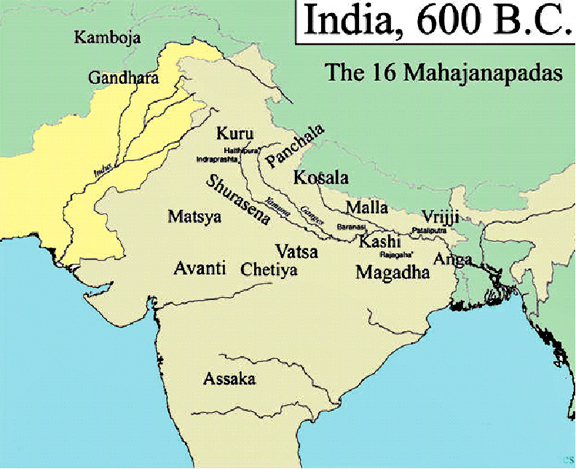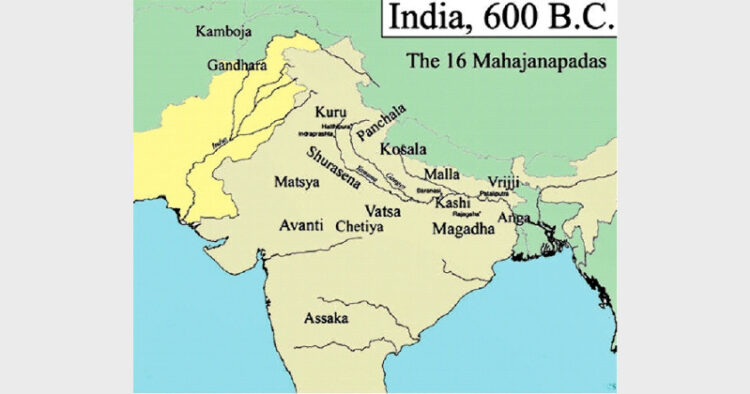 Neera Misra
Neera Misra
We often hear people speaking about India 5000 years’ rich past? Have we ever explored that period in real terms? Have we gone deep into our remote past and remote regions of ancient Bharata, to learn about them and more importantly develop them as significant tourism centres?
|
Cities of Mahabharata Era Nemisharan (Lucknow), Kashi (Varanasi), |
Besides other aspects of Mahabharata times, it is worth remembering our revered ‘’itihasic’ Heritage Cities that came to prominence in Dwapar Era and have remarkably survived by the same name since times preceding even that of Sri Krishna. They are spread across this vast land of spiritual and intellectual repository of the Vedic scriptures, eulogised in Sanskrit texts, and peeping through the Archaeological research findings, now confined as tiny places just in name as protected sites under ASI, these places have crucial role in shaping our ‘itihas’ and strengthening our civilisational roots.
It would be worthwhile to savour the essence of heritage places associated to the period of Sri Krishna, the great Rishi’s, Draupadi, Ambe, Amba, Ambalika, Yudhistra, Arjuna, Bheem and many such greats we know from our Pancham-Veda, popularly called ‘Maha-Bharata’.
The Kingdoms in those times were generally referred to as Janapada and Mahajanapad. Though ancient Bharata had many kingdoms, the most prominent ones are the 16 Mahajanapads that were powerful during the Dwapar era. Of these Uttar Pradesh has almost half this number, and some of the most important Kingdoms and their capital cities, major ones being –Kuru, Panchala, Kashi, Kosala, Vatsa, Sursena, Chedi, Mallaa.
Sri Krishna’s ‘sakha’ Draupadi”s land Panchala Mahajanapad was the first confederation of five areas which also finds mention in Kautilya’s writings, and had two important cities of Kampilya and Ahichetra. It was a great centre for Vedic learning, where Philosopher Kings patronised lakhs of scholars.
This land of Ayurveda, of Rishi’s like Dhyoma, Durwasa, and holy place Rudayan where the Pandavas paid homage to their ancestors at the Ganga bank, is also the land of Kampilvasini. Central to Uttar Pradesh, it consists of present-day parts of Central Doab and Rohilkhand. It came into much significance during Dwapar, when it was divided into two.
South Panchal went to King Drupad, with capital at Kampilya (now in Farrukhabad district). Kampilya has deep cultural roots. Meeting of Rishis to document the Ayurveda took place on the Gangal River Bank here, the birth of Drishtdyumna and Swayamvara of Draupadi made it a very prominent place for all times. North Panchala was taken by Guru Dronacharya, who made his capital at Ahichhatra (now in District Bareilly). Ahichhatra is one of the largest archaeological sites under ASI. It is believed that Ashwathama is still wandering here.
Few would know that the Mahajanapada of Sri Krishna and Balarama was known as Surasena, Mathura being its capital city. Located in the region at the junction of the Uttarapath and Dakshinapath, alongside River Yamuna. Some of the important incidents of that era that Mathura is famous for are the birth of Krishna at Mathura Jail, baby Krishna taken to Vrindavan across Yamuna river, his personal life and Arjuna and Duryodhana, both coming to his place to ask Krishna’s support for Dharma Yuddha at Kurukshetra.
Hastinapura (Merrut) was the capital city of the Kuru Mahajanapada, which was the political core of the Dharma Yudha, known as the great war of Kurukshetra, that engulfed the whole of Aryavarta in its fold. The Kuru land originally, roughly corresponded to modern Thanesar, Delhi and the entire Ganga-Yamuna Doab till Prayag. The main rivers were Aruna, Ashumati, Hiranvati, Apaya, Kausiki, mythical Sarasvati, Jamuna, Ganga and Drishadvati or Rakshi.
Kuru desh was ruled by the Bharat Vansha, and during Dwapar era Dhritarashtra was made the caretaker King after the demise of his brother Pandu. The fight for political supremacy between the sons of Pandu and Dhritrashtra led to the division of Kuru Kingdom, resulting in the creation of Indraprastha. The Kuru areas of Khandavprastha, Swarnaprastha (Sonipat), Paniprastha (Panipat), Tilaprastha (Tilpat). Baghprastha (Baghpat)) were given to Pandav brothers, and they established their capital in the Khandavprastha forest areas, naming their country and city as Indraprastha. Indraprastha corresponds to current day NCR Delhi region, with the main royal area being at Indraprastha Quila, now called Purana Quila.
Some incidents connected to Hastinapura and Indraprastha include – who should be Yuvraj of Kuru Kingdom? Dice Game, Draupadi humiliation, Draupadi challenging the Kuru kingdom, Krishna trying to broker peace between cousins, that made Duryodhana.
Some other places are also linked to Kuru Mahajanapada. Baghpat, near Meerut, became infamous for the Lakhshgriha, where Duryodhana planned to kill his Pandava cousins by making a palace of ‘laakh’, a combustible material.
Vatsa, with Kausambi as capital, was a branch of Kurus, covering modern districts of Allahabad Prayag and Mirzapur – Kaushambi. The Kuru/ Pandu Kingdom shifted here during the reign of Nichasku (5th in line from Parikshit), after massive floods at Hastinapura, and later Pandu descendant Udayana, who was contemporary of Buddha, ruled here.
Kosala had three chief cities of Ayodhya, Saketa and Sravasti and its capital at Shravasti. It was covering the present districts of Faizabad, Gonda, Bahraich, Lucknow etc. Brihadbala was the Ruler of Kosala at the time of the Mahabharata War. He took the side of the Kauravas during the War and was killed by Abhimanyu.
Kashi – Located in and around present-day Varanasi, Banaras, in Uttar Pradesh. The Kashi Kingdom played a very important role during Dwapar era. Kasi Naresh had three daughters Ambe, Ambike Ambalika, who played a significant part in the Kurukshetra War. Taking rebirth as Shikadi, Abika becomes the cause of Bhishma Pitama’s defeat in the war.
Chedi kingdoms capital was known as Shuktimati. It covered the modern Bundelkhand areas and its most significant king was Sishupala, who had to be killed by Sri Krishna during Yudhishtra’s Rajasuya Yajna. Bheem’s wife too was from Chedi.
Cultural (and Krishna) Tourism Circuit can tap and link this fading treasure to strengthen roots of our civilization and make Culture and History a part of the development process for local socio-economic benefits.
An important step for Urban Development is not to name any habitation colonies in the name of ancient cities, as this has caused much harm in a proper understanding of the geography of ancient India.
(The writer is Chairperson of Draupadi Trust)














Comments